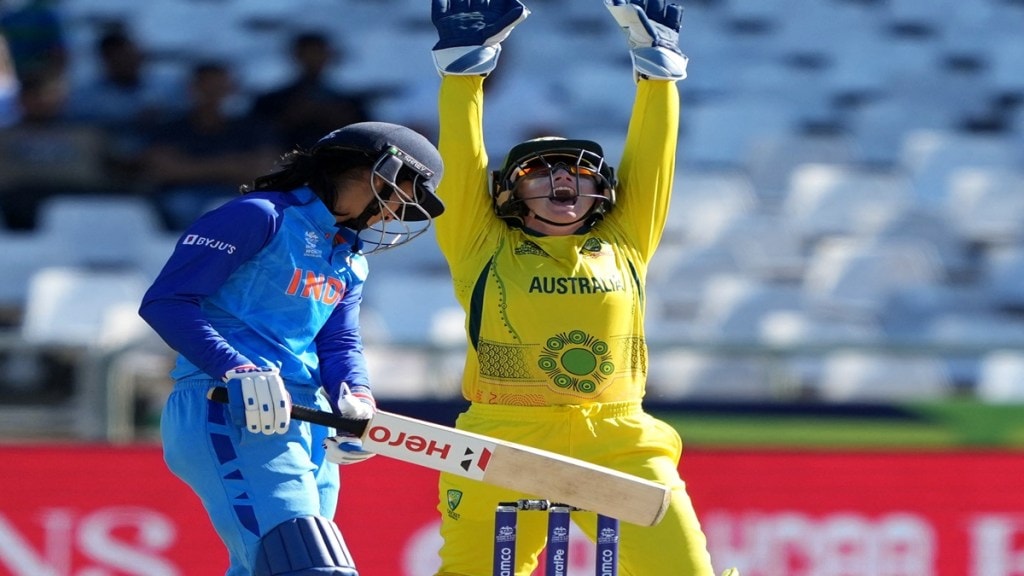By Tushar Bhaduri
So, another senior ICC women’s event has gone by without the Indian team graduating from being gallant losers to champions. What will hurt them the most about the semifinal they lost to Australia on Thursday is that the result could have easily gone the other way. And with hosts South Africa edging past England in the other last-four clash, Harmanpreet Kaur & Co would have fancied their chances if they made it to the title clash.
But failure to get past the finish line when the stakes are the highest is not a new weakness for the Women in Blue. The recent U-19 T20 World Cup title was the first major trophy for India in the women’s game. This was despite coming close to breaking their duck several times. In the last half a dozen years, India has managed to break the duopoly hitherto enjoyed by England and Australia. New Zealand seem to have fallen by the wayside a bit, while the West Indies didn’t build on their solitary title at the 2016 T20 World Cup.
During this period, there has been unprecedented financial backing and infrastructural support for the women’s game in India. And things are likely to only get better with the launch of the Women’s Premier League. The players of generations gone by could be forgiven for feeling a bit jealous of the current lot, as they often had to spend from their own pockets to pursue their passion with much less in terms of coaching and technical know-how.
So, it’s understandable when the likes of Diana Edulji, who played for and led the country with distinction when the financial rewards were much less, argue that it’s time for the Indian women’s cricket team to start delivering titles.
Also read: Ringside view by Tushar Bhaduri: Pitch plays on Aussie minds
But realising that objective has a huge barrier in its path – an Australia-sized barrier. It’s the one team against which the Indians have almost always fallen short. But they are not the only ones to find the Aussie girls an insurmountable obstacle – in fact, India is the team which has, from time to time, given Meg Lanning’s side a scare, like they did at Cape Town on Thursday.
Best in the business
But the Australians, rightly considered one of the greatest teams in the history of the game, combine unmatched overall technical superiority with unprecedented mental fortitude and resilience to bounce back from tough situations.
It’s almost like a lot of tennis players feeling hard done by in an era when almost all the big titles were shared among Rafael Nadal, Novak Djokovic and Roger Federer.
But cursing one’s luck doesn’t get anyone anywhere. One needs to do everything one can, and if even that is not enough to get the result one is after, one can at least have no regrets.
However, on Thursday, India for a long time seemed to be afflicted by stage fright, especially while bowling and fielding. Australia, by their own admission, were not firing on all cylinders, but raised their game when it mattered most to prevail in the end.
On the other hand, India, despite all the recent improvement, is still a team relying on a few individual players to do the heavy lifting. It was evident in the semifinal also as the Indian chase petered out once Harmanpreet and Jemimah Rodrigues were sent back to the dugout.
The recent WPL auction has ensured that cricket, for the first time, is seen as a viable career option by girls interested in the game. One need not be representing the country to earn a decent livelihood by pursuing one’s passion. It will also deepen the talent pool and provide a strong bench in the form of viable alternatives to top players.
Also read: Ringside view by Tushar Bhaduri: Mirror to Indian frailties
However, all this will hardly be any consolation to Harmanpreet and her teammates mourning yet another close knockout-round defeat to Australia, after the 2022 Commonwealth Games final. Some would rue their luck citing Harmanpreet’s crucial run-out, after her bat got stuck in the pitch while she sprinted for a second run, and the wide not called by the umpire in the penultimate over of the game.
Difference between the teams
But often, one has to make one’s own luck and India should look back at their shoddy fielding effort. Catches were frequently dropped and ground-fielding too was much below the standard expected in a World Cup semifinal. One can only put that down to big-stage nerves.
Australia, in contrast, looked comfortable in a knockout scenario, almost relishing a tough challenge and overcoming it. Lanning even described Thursday’s win as one of the best in her career. That’s why they are the gold standard in the women’s game, a stature India – both players and establishment – should be keen on emulating.
The WPL is expected to be a game-changer as access to the best coaching and training methodologies, and rubbing shoulders with the greats of the game in the same dressing room, will do wonders to the technical ability and confidence of the Indian players. Proper scouting is likely to bring hidden talents from the nooks and corners of the country to the fore.
But Indian women’s cricket must resist the temptation of considering the WPL as the panacea for all its shortcomings. And it should look back at the history of the men’s team as far as T20 cricket is concerned.
Despite having the best, most high-profile and competitive domestic league in the world, the only time India have been champions in the format was in the inaugural edition in 2007, before a ball had been bowled in the Indian Premier League.

